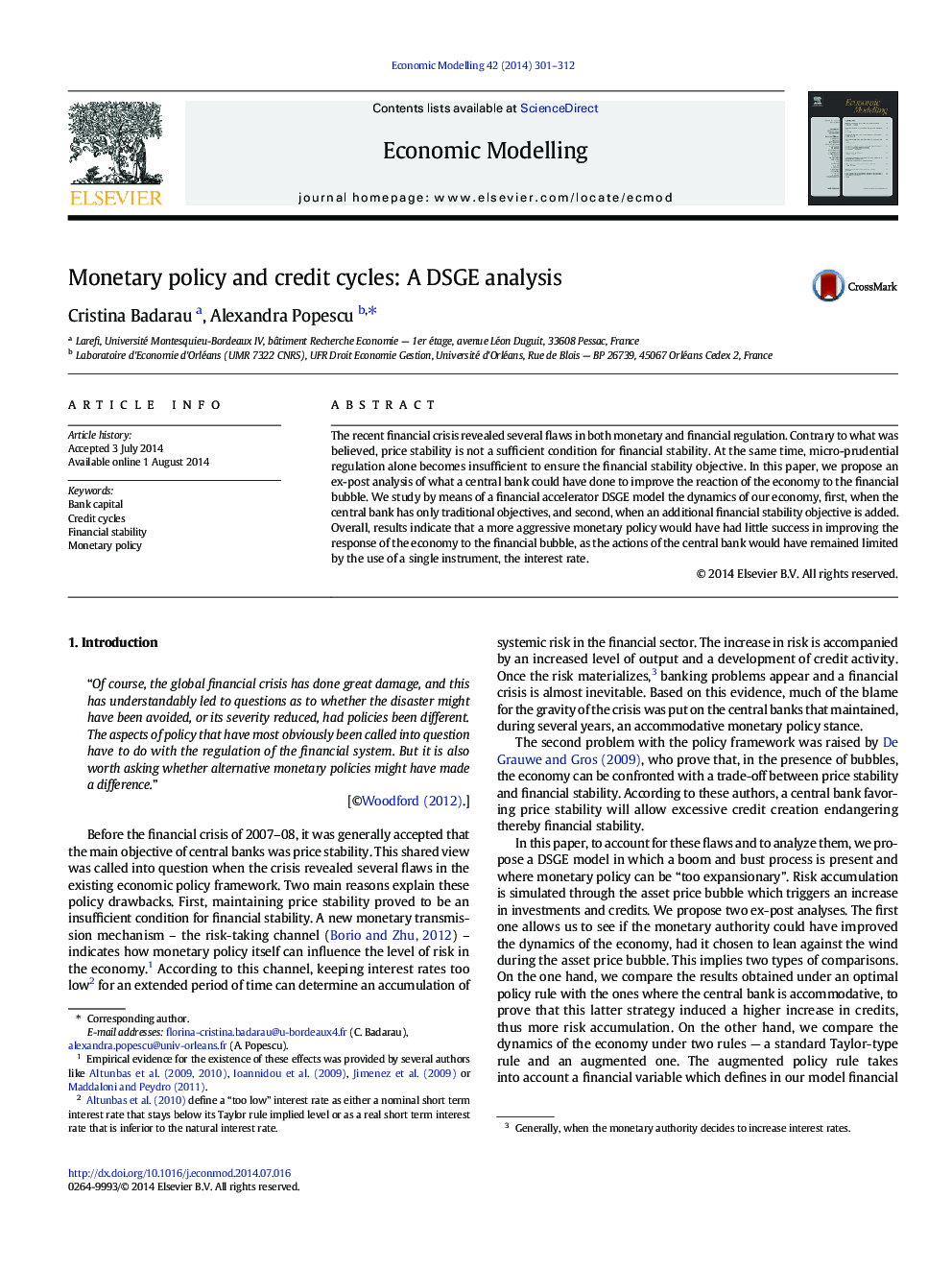| Article ID | Journal | Published Year | Pages | File Type |
|---|---|---|---|---|
| 5054030 | Economic Modelling | 2014 | 12 Pages |
â¢We study the central bank (CB)'s behavior when faced with a boom and bust process.â¢A general equilibrium perspective is used to this aim.â¢The CB takes interest in the financial stability objective.â¢Using an augmented Taylor rule does not clearly improve financial stability.â¢Trade-offs appear when the CB uses one instrument for multiple objectives.
The recent financial crisis revealed several flaws in both monetary and financial regulation. Contrary to what was believed, price stability is not a sufficient condition for financial stability. At the same time, micro-prudential regulation alone becomes insufficient to ensure the financial stability objective. In this paper, we propose an ex-post analysis of what a central bank could have done to improve the reaction of the economy to the financial bubble. We study by means of a financial accelerator DSGE model the dynamics of our economy, first, when the central bank has only traditional objectives, and second, when an additional financial stability objective is added. Overall, results indicate that a more aggressive monetary policy would have had little success in improving the response of the economy to the financial bubble, as the actions of the central bank would have remained limited by the use of a single instrument, the interest rate.
